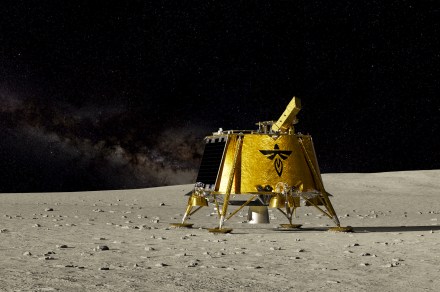
This week will feature a historic event as Firefly Aerospace launches its first mission to the moon. The Blue Ghost mission aims to put a lander on the moon carrying NASA science experiments, as part of NASA’s efforts to get private companies involved in lunar exploration. If the landing succeeds, it will be just the second soft lunar landing by a private company, following the Intuitive Machines Odyssey lander last year.
Firefly Aerospace’s Blue Ghost mission will launch late at night on Tuesday, January 14, or Wednesday, January 15. Using a SpaceX Falcon 9 rocket, the Blue Ghost will launch from Launch Complex 39A at Kennedy Space Center in Florida. The launch will be liveistreamed by NASA, and you can watch it either on YouTube or by using the video embedded below:
Coverage begins at 12:30 a.m. ET on Wednesday, January 15 (that’s 9:30 p.m. PT on Tuesday, January 14), with the launch scheduled for 1:11 a.m.ET (10:11 p.m. PT).
Once launched, the Blue Ghost lander will spend 45 days in space traveling to the moon. It will attempt a soft landing on the lunar surface in early March in the Mare Crisium region. It will then spend around two weeks (a full lunar day) operating its science instruments, with the aim of capturing images of the lunar sunset and investigating how the setting of the sun affects the dusty material on the moon’s surface, called regolith.
Please enable Javascript to view this content
There are a total of 10 payloads on the Blue Ghost mission, including those built by NASA, the Italian Space Agency, Blue Origin, and various universities and research centers. These include a drill to enable measurements from several meters beneath the moon’s surface, a new tool for collecting samples of regolith pneumatically, experiments into the stickiness of regolith (a major issue for moon missions), and a device that uses electric fields to repel dust and prevent it from sticking to surfaces.
The lander is around two meters tall and 3.5 meters wide, with four widely space legs that are equipped with shock-absorbing feet to help it touch down gently on the moon’s surface without damage. The legs are built from carbon composites, so they are lightweight, and they have honeycomb elements to help absorb forces during touchdown. The lander will use terrain-relative navigation, similar to the technology used for Mars landings, in which onboard computers take images of the surface to help select a safe landing zone and avoid hazards like craters or boulders.
A video from Firefly shows the planned sequence of the mission:
